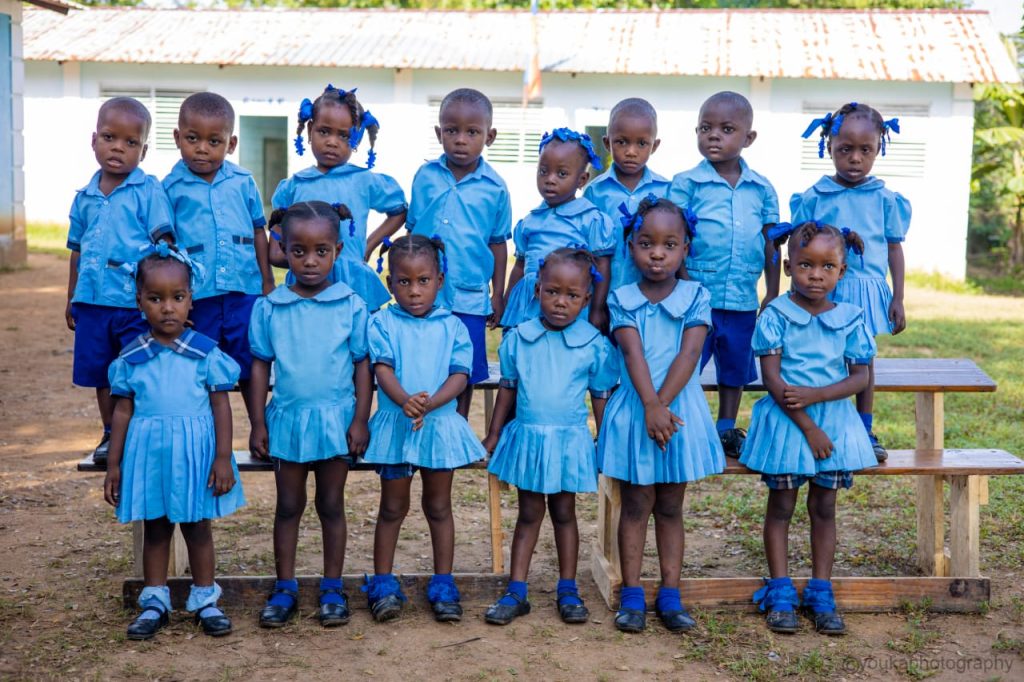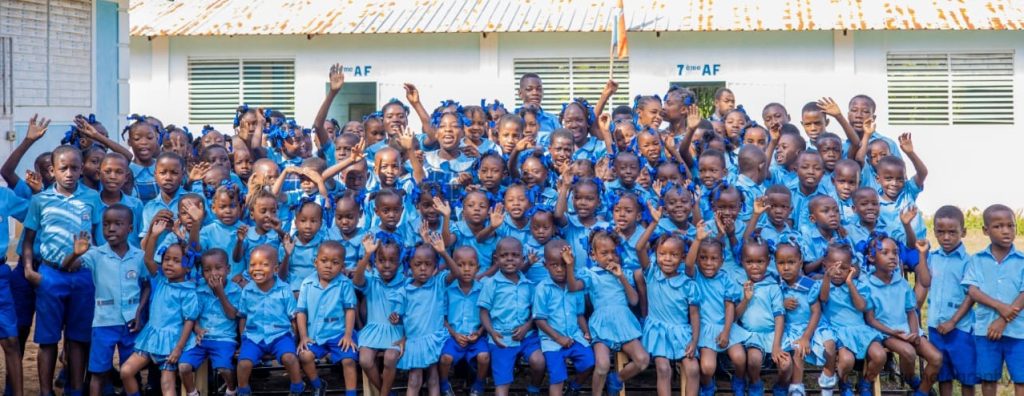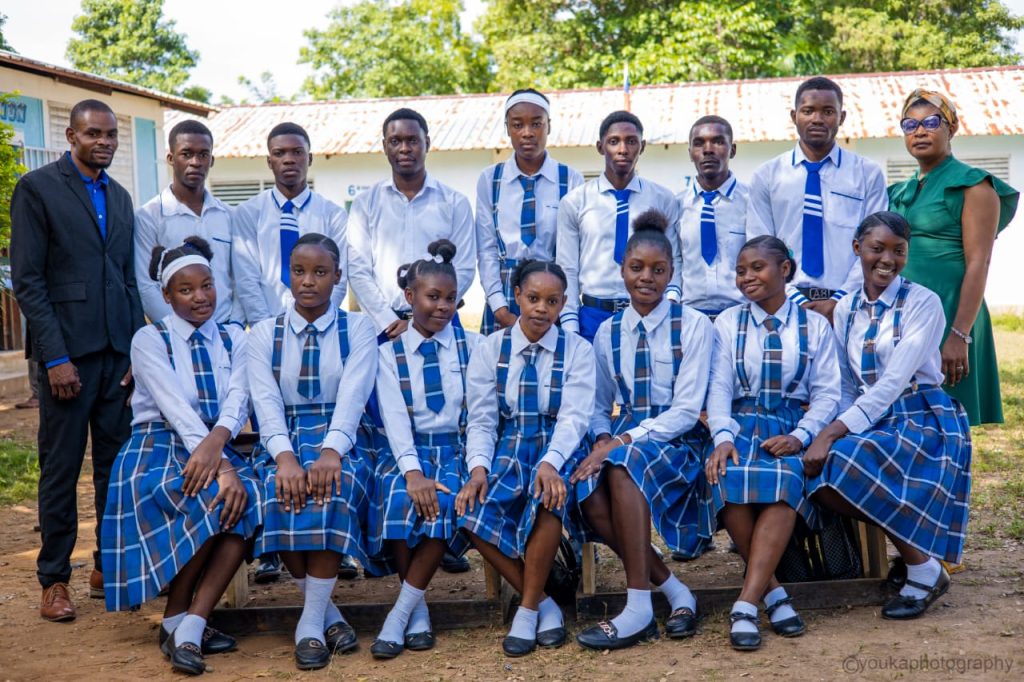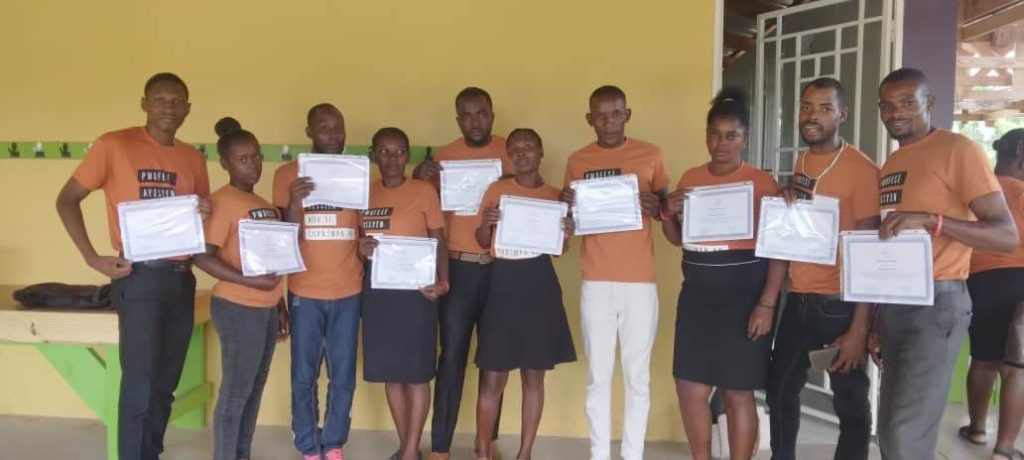



Why education matters for Haitian Children
At YAH, we firmly believe and advocate the right of every child to quality education. We are committed to increase access to education for vulnerable children including those at risk of dropping out, and out-of-school children. Even in the mist of crisis, the accessibility to education has remained a priority for the sake of the children’s well-being.
At YAH, we also recognize that children who are out of school are more vulnerable to exploitation, prostitution, abuse, teenage pregnancy, and gang involvement and address these challenges head-on, providing access to education, offering an alternative pathway to protect children from these dangers. Our approach is holistic, ensuring that every child and young person we work with receives the support
they need to thrive.
Haiti’s education system is structure into three years of Preschool (ages 3-5), nine years of compulsory Elementary School (ages 6-11), and four years of High School. A national exam is required to enter High School and another one at the end of the 4th year to graduate.
Preschool (3 years)
- Age 3-5 years old
Elementary School (9 years) divided into three cycles:
- First cycle: 1 st to 3 rd grade
- Second cycle: 4 th to 6 th grade
- Third cycle: 7 th to 9 th grade
- Children must pass a mandatory national exam at the end of 9th grade to continue to High School.
High School: (4 years)
- Graduation requires passing a final national exam known as the Baccalauréat.
We aim to make a tangible difference not only in the lives of the children and young people, but also in the community they will one day transform. By investing in these children, we are fueling a future where the children of the community can dream boldly and achieve greatness. Join us in this mission to educate, empower, and inspire a bright tomorrow.
Our School provides structure, supervision, and access to support systems that help protect children. When a child is out of school, these protective factors are removed, exposing them to greater risk. We currently have 250 children in our program but can accommodate up to 500 if we receive more scholarship support. Many children have to stay home because their parents can’t afford school tuition. For many children in our region, the closest public school is more than a one-hour walk away.